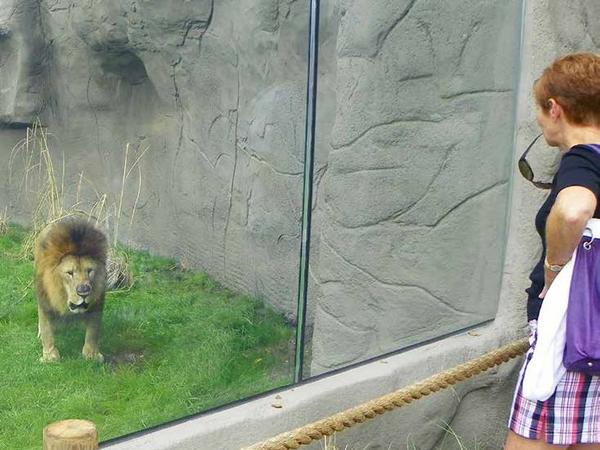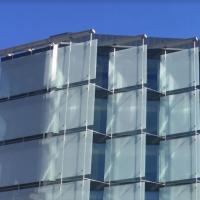
Date: 23 June 2021
Since 1928, the Detroit Zoo has displayed kings (and queens) of the jungle. The zoo's 3,500-sq-ft lion habitat was one of the first animal exhibits featured when the Detroit Zoo opened. Until 2011, the exhibit had remained about the same, giving zoo guests a somewhat distant view of lions, seen from the safety of a viewing area separated by a 22-ft-wide, water-filled, cement-walled moat. Beyond that, "out there" could be seen the Detroit Zoo's lions.
The zoo now has six lions: Bikira, Emily, Erin, Katie, Larson and Percival. Two were rescued several years ago: one from an abandoned building and another from a suspected crack house. Three more lions recently found sanctuary at the zoo, after living at a junkyard in Kansas.
For rescued felines, decent care-giving, space and habitat can be a huge improvement. But the Detroit Zoo has welcomed its expanded lion family this year by more than doubling their outdoor roaming area (from 3,500 sq ft to 7,500 sq ft)... without taking away space from other animal exhibits.

from Trosifol™ is used for maximum protection in a nearly invisible barrier screen.
What's more, visitors can now see the lions face-toface, eye-to-eye, sometimes just a few feet away, while standing in their same environment, separated by only a laminated glass screen, made with SentryGlas® ionoplast interlayer from Trosifol™.
Landscaping features are shared on both sides of the glass, for a more complete feeling of immersion in the habitat. The million-dollar exhibit overhaul even includes heated warming rocks, placed near the glass, inviting the big cats to lounge closer to human observers on cooler days.
Giving lions a better zoo and patrons a better view ... without inviting real danger ... meant using extra strong safety glass in the clear barrier screen.
The enclosure's 17-ft-high glass walls include 60 panels of laminated glass starting near ground level, mounted using horizontal line supports at the top and bottom. The clear screen starts with 8-ft-tall, 4-ft-wide laminated glass panels made of four layers of tempered 1/2-inch-thick extra clear (low-iron) glass, alternating with three layers of clear 60-mil SentryGlas® ionoplast interlayer from Trosifol™. It's a new style of multi-layered glass often used in high-security situations, to provide durable barrier strength plus extra clarity.
"It can take the force of a 2.5-ton truck at 40 miles an hour, which is considerably more than any lion," said Ron Kagan, executive director of the Detroit Zoological Society Executive Director.
Higher-mounted panels of the glass screen are made of thinner laminated safety glass, completing the needed barrier height while retaining the feeling of openness. Because the glass screen is so clear, the zoo has added decals of birds in flight, to help prevent birds from flying into the glass unaware of its presence.
The zoo glass gives patrons an improved view with minimal visual interruption from glass structural supports. SentryGlas® ionoplast interlayer from Trosifol™ is up to 100 times stiffer and 5 times tougher than traditional safety glass interlayers, which allows larger, more expansive panels with lower deflection for extra resistance to breakage in thinner laminates. The moisture resistance of SentryGlas® also allows for frameless "open-edge" glass edges, further opening the vision area in glass viewing screening applications.

Trosifol™.
Trosifol™ is the global leader in PVB and ionoplast interlayers for laminated safety glass in the architectural segment. With the broadest product portfolio Trosifol™ offers outstanding solutions:
- Structural: Trosifol® Extra Stiff (ES) PVB and SentryGlas® ionoplast interlayer
- Acoustic: Trosifol® SC Monolayer and Multilayer for sound insulation
- UV Control: from full UV protection to natural UV transmission
- UltraClear: lowest Yellowness Index in industry
- Decorative & Design: black & white & colored interlayers
 600450
600450































Add new comment